The Management Paradigm Driving The World’s Most Valuable Firms
by: Steve Denning
Surprise! The Most Valuable Firms In The World Are Agile!
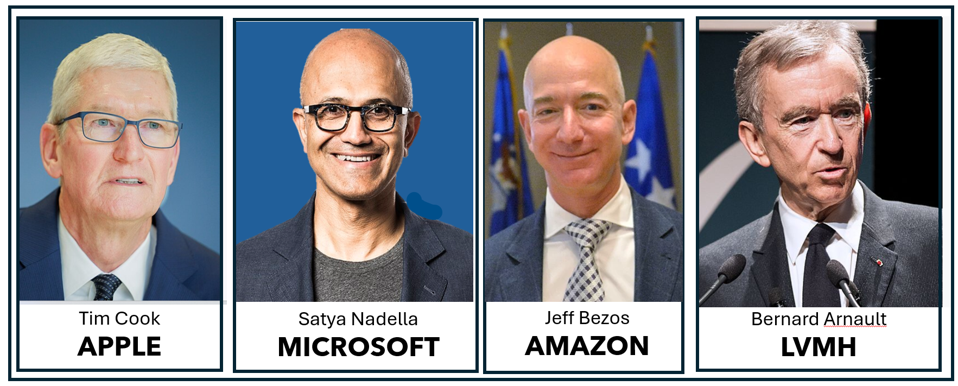 Tim Cook, CEO of Apple; Satya Nadella CEO of Microsoft; Jeff Bezos, founder of Amazon; Bernard Arunaut, CEO of LVMH
Tim Cook, CEO of Apple; Satya Nadella CEO of Microsoft; Jeff Bezos, founder of Amazon; Bernard Arunaut, CEO of LVMH
The most valuable and the fastest growing firms today (see Annex 1 and 2) are being managed very differently from average performing firms. The shift is being driven by practitioners. average firms are still catching up. In 2024, it’s time to follow Peter Drucker’s 1997 advice and “look out the window and see what's visible—but not yet seen." A paradigm shift in management has occurred. The new way of managing embodies at least five big shifts.
1. ‘Mankind’ Comes Before ‘The System’
The first—and most important—shift is the reversal of Frederick Taylor’s’ 1911 dictum, “In the past man has been first; in the future the system must be first.” Taylor thought that human needs, desires, and interests would—and should—be subordinated to a scientific system of management processes and methods.
For the next century, Taylor’s prediction proved correct. Humanity was subjected to a series of ‘systems’ that drove behavior. The ‘system’ had different labels at different times and in different contexts, including: Scientific Management, the Toyota Production System, Lean Manufacturing, Lean Six Sigma, Total Quality Management, Business Process Re-engineering, Scrum, Extreme Programming, and Capability Management. It is reflected in the World Management Survey and ISO 9000.
Human factors were not totally ignored in “the system,” but in implementation, they occupied a subordinate place. Individuals were routinely subjected to processes and methods in the pursuit of greater efficiency and financial gains. In the 20th century, firms implementing these ideas made extraordinary economic gains and most of humanity benefited as customers even a employee engagement often remained low.
Then the world changed. The internet gave first, to firms, new possibilities for innovation, and then to customers, more choices. As a result, in the last quarter century, leading firms began implementing the converse of Taylor’s dictum. As they found ways to have human concerns drive the processes, practices, and methods, they were able to grow much faster and generate exponentially more value.
The terminology used by the firms varied. Apple talked of a different ‘culture’. Microsoft talked about ‘mindset’, ‘empathy’ and ‘values.’ Amazon talked about ‘leadership; principles.’ Some firms talked of ‘mental models’ and ‘narratives.’ The Agile Manifesto spoke of valuing “individuals and interactions” more than “processes and tools.” At LVMH, CEO Bernard Arnault talked of giving designers ‘freedom without limits’. Whatever the vocabulary, a new breed of firm used subjective concepts to drive their business processes. These mental models, goals, mindsets, values, narratives, passions and purposes were the very things that scientific management had dismissed in principle.
2. The Only Valid Purpose Of A Business: To Create A Customer
“There is only one valid definition of business purpose,” wrote Peter Drucker in 1954 in The Practice Of Management: “to create a customer.” For the next half century, firms paid little more than lip service to his insight. Instead, firms elevated the implicit goal of making money to an explicit goal of “maximizing shareholder value”. This shift was based on the 1970 advice of Nobel Prize winning economist, Milton Friedman, and the official endorsement of the Business RoundTable in 1997. Human factors were often referred to, but in most large firms, they were systematically subordinated to ‘the system.’
By contrast, in the last quarter century, the most valuable and fastest growing firms embraced generating value for customers as the primary goal of the firm.
- Amazon talked of “customer obsession… long-term growth is best produced by putting the customer first:” Colin Bryar and Bill Carr in Working Backwards (2021).
- Satya Nadella as the new CEO of Microsoft in 2014 set out to “build deeper empathy for our customers and their unarticulated and unmet needs.” Hit Refresh.
- At Apple, “Customers rightly love Apple for the delight its products bring them:” Inside Apple.
In effect, although these firms rarely refer to the Agile Manifesto, they give every sign of living the first principle of the Manifesto, applied to the whole organization, not just software: “Our highest priority is to satisfy the customer…”
3. Work Is Done By Self-Organizing Teams
Given conventional management’s increasing emphasis on maximizing shareholder value—a goal that workers were unlikely to embrace—they had little choice but to impose tight managerial supervision of all work. Top-down bureaucracy. continued, despite growing complexity and unpredictability.
By contrast, once the most valuable and fastest growing firms had embraced the primacy of creating value for customers—a goal that workers could embrace—it was natural that they would dis-aggregate big difficult problems into small batches and performed by cross-functional autonomous teams, working iteratively in short cycles in a state of flow, with fast feedback from customers and end-users.
- As Satya Nadell explains in Hit Refresh, “the key was agility, agility, agility. We needed to develop speed, nimbleness, and athleticism to get the consumer experience right, not just once but daily.”
- Amazon discovered the importance of single-threaded teams that minimizes internal -organizational dependencies.
Here too, what the firms do closely fits the Agile Manifesto:, “Build projects around motivated individuals. Give them the environment and support they need, and trust them to get the job done.” When applied to the whole organization, not just software development, the result is “a permissionless corporation”.
4. The Shift From A Hierarchy Of Authority To A Network Of Competence
Given the conventional management goal of maximizing shareholder value, firms naturally embraced a centralized, hierarchical pyramid structure, with functional compartments in which individual workers could be tightly supervised. The structure was applied by most firms, even as the Internet made large vertical pyramids an increasingly bad fit.
By contrast, the most valuable and fastest growing firms tended to shift towards a flexible network of competence with defined interfaces among the self-organizing teams.
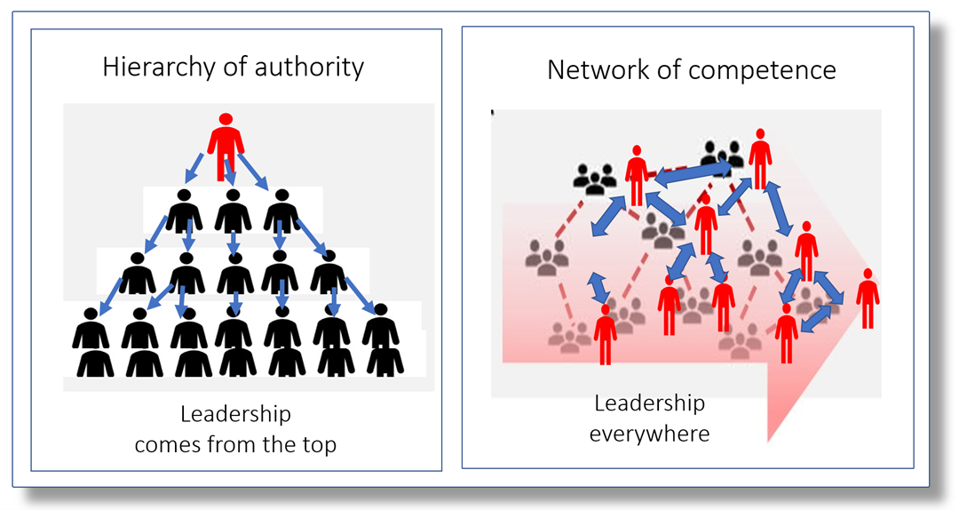
Hierarchy of authority vs Network of competence
Conventional managers were puzzled. They knew that a large network would be chaotic and unable to get things done. Thousands of years of experience with Greek, Roman and Chinese armies had shown it to be so. It was not even worth thinking about anything different, at least until they saw how it led to the gains of the most valuable and fastest growing firms.
5. How Mindsets Also Transform The Firm’s Processes
In firms in which ‘the system must come first,’ a fundamental rethink of the firm’s processes was unthinkable. "The system” was the basis of the gains of the 20th century. Careers had been built on it. Business schools continued to teach it. As noted above, adjustments at the margin were explored throughout the century. But through it all, processes and methods ruled supreme.
By contrast, in the last quarter century, the most valuable and fastest growing firms have abandoned the primacy of "the system" and are now free to rethink how every process and method can be repurposed so as to support the new mindsets, mental models and values.
- Leadership could be democratized. Everyone was now a leader, not just the top.
- Strategy was no longer merely “coping with competition.” It was a continuing search for new business opportunities.
- Innovation went beyond upgrading existing products to meeting unmet customer needs.
- Human resources could escape from its traditional role as a top-management controller and become a function that enabled individuals to create more value for customers.
- Budgeting can be rescued from its unproductive “battle among the silos” to one of enhancing value creation.
The New Management Paradigm
The most valuable and fastest growing firms have thus created a new management paradigm. These firms have shown that they can Innovate more quickly, operate more efficiently, mobilize more resources, attract more talent, and use it more effectively, win over customers more readily, and raise more money for new endeavors. We as customers have mostly embraced their products and services, which have changed how we work, how we play, how we live. Although no one can predict the future, the change looks likely to endure.
The question is when, or even whether, average firms will be able to catch up.
And read also:
Annex: The Most Valuable Firms in the U.S., Europe, China, and Japan
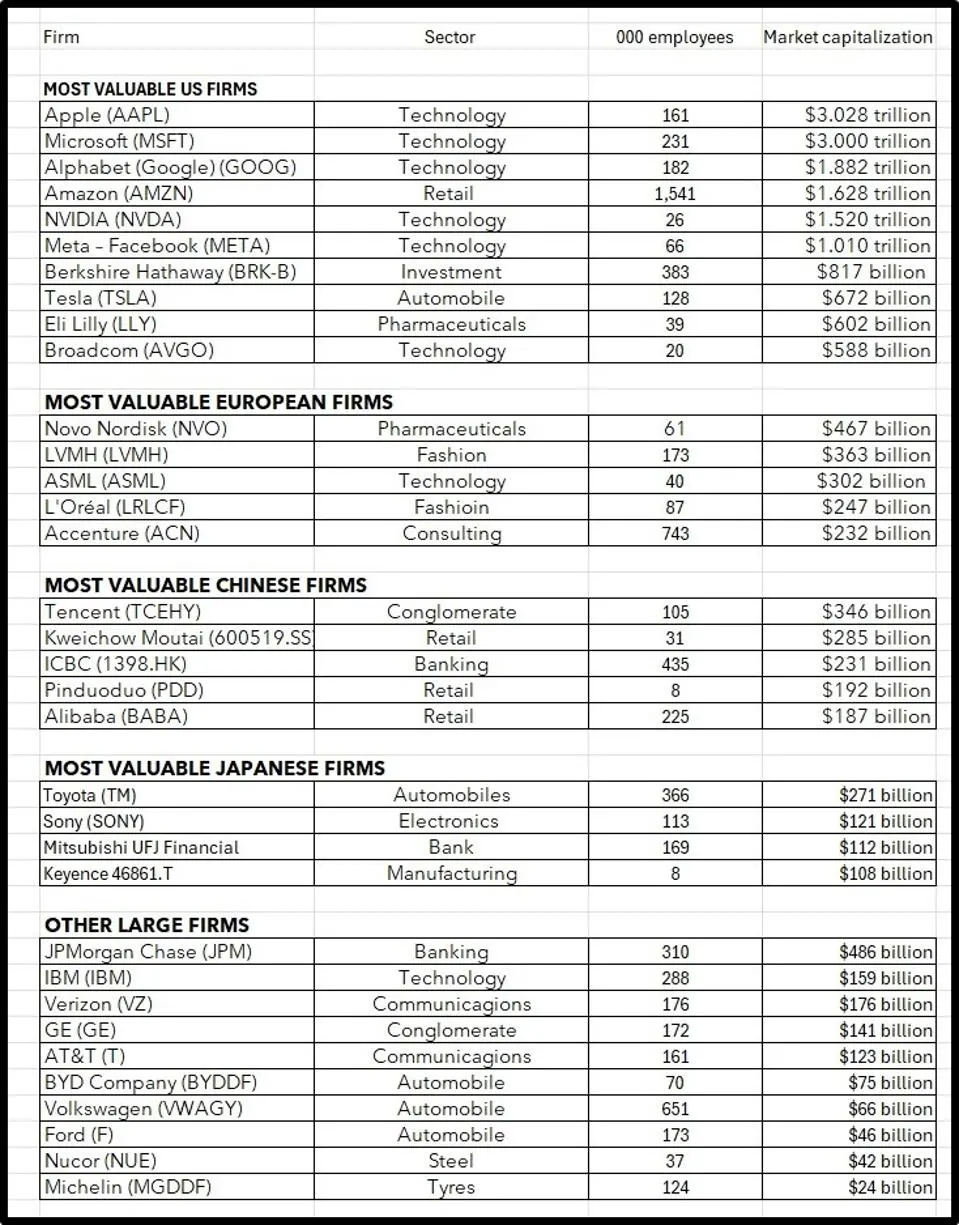
Most valuable US, European, Chinese and Japanese firms
Annex 2: The Fastest Growing Firms in the U.S., Europe, China and Japan
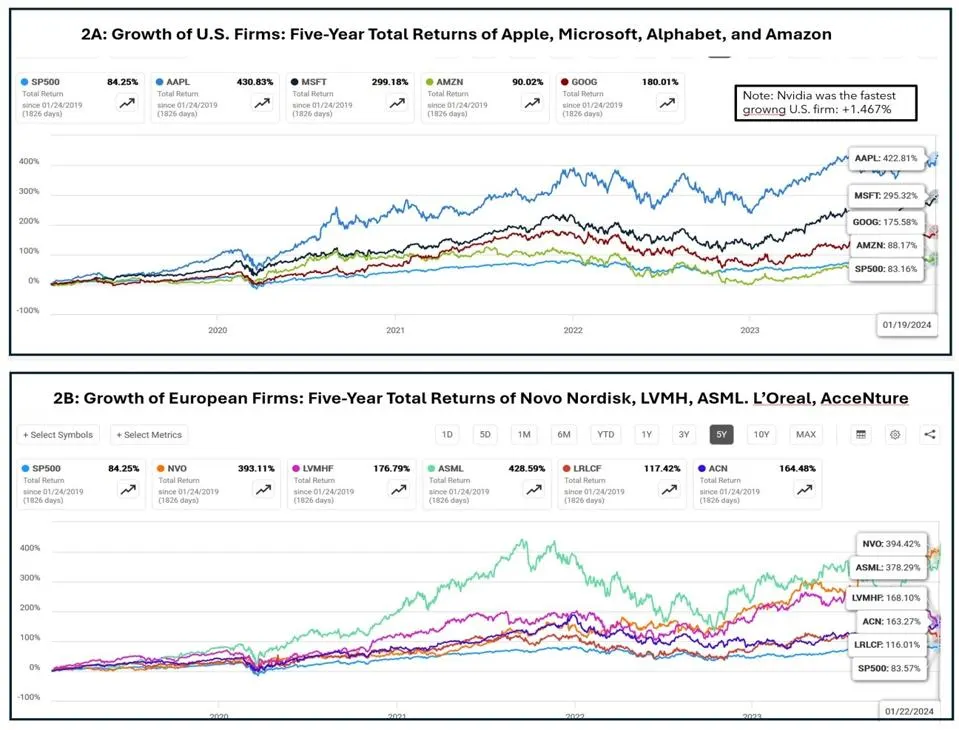
Fastest growing US and European firms
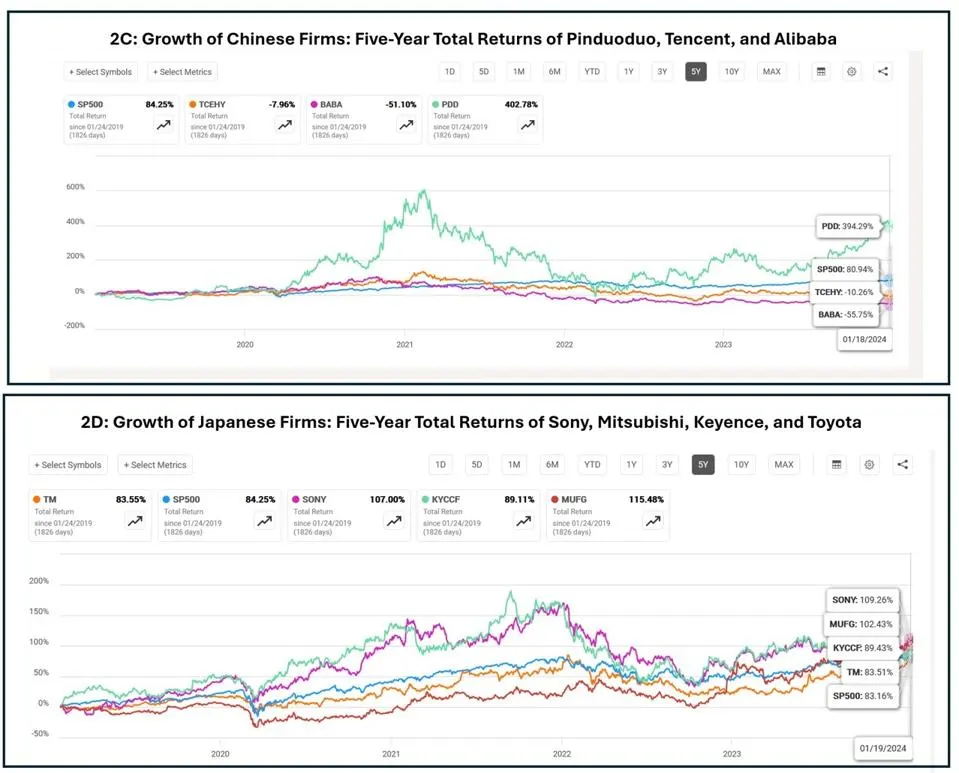
Growth of Chinese and Japanese firms
Original article from Forbes, written by Steve Denning and authorized to be published in the World Management Agility Forum by Steve Denning.
Original Article: https://www.forbes.com/sites/stevedenning/2024/01/25/the-management-paradigm-driving-the-worlds-most-valuable-firms/